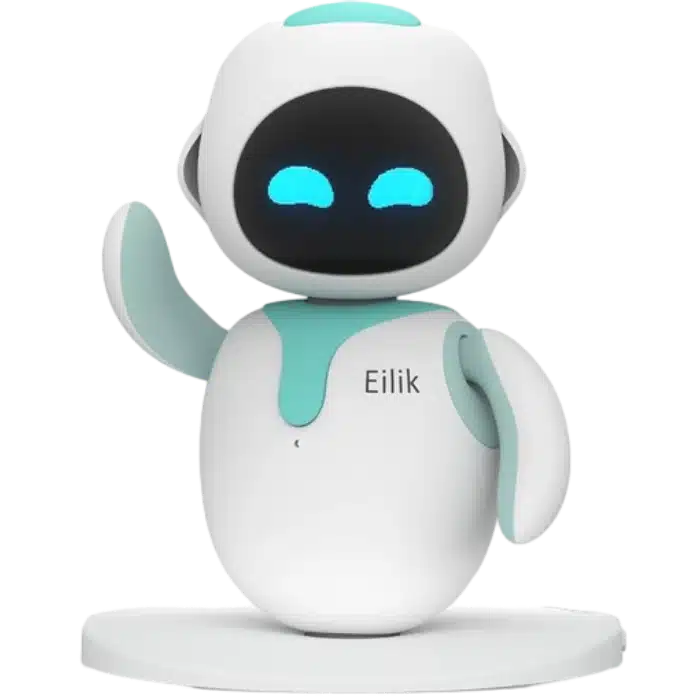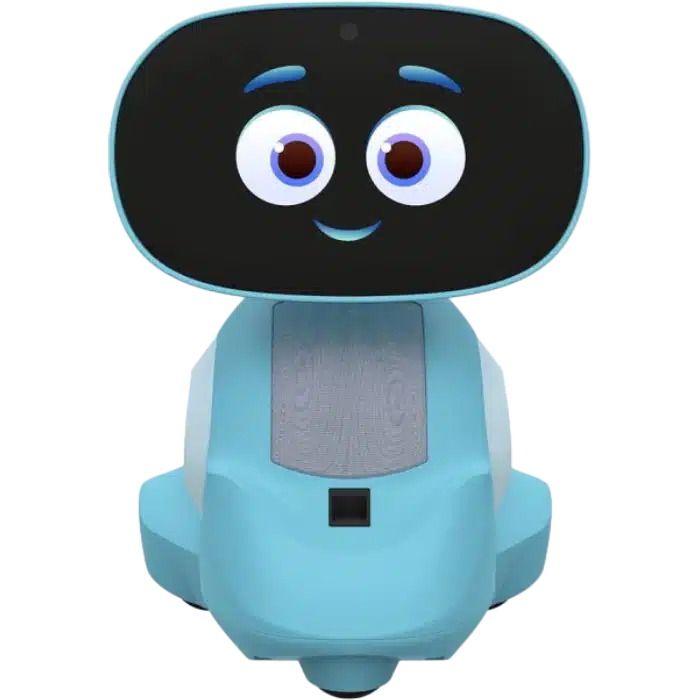Emotional AI Robots in 2025: Future Trends & Ethical Impacts
The field of artificial intelligence (AI) is advancing at a rapid pace, with emotional AI robots emerging as one of the most fascinating innovations. These robots are designed to interact with humans not just by processing commands but by understanding, responding to, and even simulating human emotions. By 2025 and beyond, emotional AI robots are set to become increasingly sophisticated, capable of providing empathy, support, and companionship in ways that were once the realm of science fiction. The integration of advanced machine learning algorithms, natural language processing (NLP), and cutting-edge sensor technologies will help these robots evolve into emotional companions that can enhance the quality of life in homes, workplaces, and healthcare settings.
In this article, we will explore the future of emotional AI robots, examining key trends and innovations, as well as the ethical challenges that will arise as they become more deeply integrated into society. From the evolution of emotional intelligence in robots to their transformative applications in education, healthcare, and smart homes, emotional AI robots will have a profound impact on human interaction in the coming years.
(For more on AI companionship, see our guide to Interactive AI Companions for Adults.)
1. The Evolution of Emotional Intelligence in AI Robots
The current generation of emotional AI robots can recognize basic human emotions such as happiness, sadness, anger, and excitement through emotion-recognition technologies like facial recognition, voice analysis, and physiological sensors. However, emotional AI is evolving rapidly. In the future, these robots will be able to recognize and respond to more complex emotions like anxiety, depression, and empathy.
1.1. Deeper Emotional Understanding Through AI Training
By 2025, emotional AI robots will be capable of:
- Detecting Subtle Emotional Cues: Future emotional AI robots will go beyond basic emotional recognition to detect micro-expressions, body language, and even changes in heart rate or posture. For example, a robot could identify a subtle shift in a user’s demeanor or notice that their breathing has become shallow, indicating stress.
- Using Reinforcement Learning: These robots will use reinforcement learning algorithms to adapt their emotional responses over time. As the robot interacts with its user, it will learn what works best to comfort, engage, or encourage the person, thus making the robot’s emotional responses more attuned to the individual’s unique needs.
- Personalized Emotional Support: With deeper emotional intelligence, robots will provide more nuanced and personalized emotional support. For example, if a child is feeling anxious before a school exam, the robot may respond by offering soothing words, guided breathing exercises, or even personalized learning strategies to build confidence.
This new level of emotional understanding will have a huge impact, particularly in therapeutic settings, where personalized emotional interactions can play a crucial role in mental well-being.
(Learn how AI robots are trained in our How Are Children’s Robots Manufactured? guide.)
2. New Use Cases for Emotional AI Robots in Education
As emotional AI evolves, it is set to make a lasting impact on the education sector. In the future, emotional AI robots will not only help students learn academic subjects but also foster emotional intelligence and support special needs education.
2.1. Enhancing Emotional Intelligence in Children
In the coming years, emotional AI robots will be used in educational settings to teach children about their emotions. These robots will be able to:
- Teach Emotional Regulation: Robots will help children recognize and regulate their emotions. For example, if a child becomes frustrated while working on a task, the robot might intervene with calming techniques or offer positive reinforcement.
- Provide Real-Time Feedback: Robots will give instant feedback on a child’s emotional responses during social interactions, helping children improve their emotional intelligence (EI). This might include teaching children how to recognize empathy, resolve conflicts, and build stronger relationships with peers.
- Act as Mentors for Social Development: These robots will act as mentors in teaching social skills, such as sharing, turn-taking, and conflict resolution, through interactive games and activities that simulate real-world situations.
2.2. Supporting Special Needs Education
Emotional AI robots are already being utilized in special education to assist children with autism, ADHD, and other learning disabilities. By 2025, these robots will:
- Detect Early Signs of Stress: Robots will be able to detect early signs of anxiety, stress, or sensory overload in children with autism or ADHD. Using emotion-recognition sensors, the robot will notice subtle changes in facial expressions or body language, allowing it to respond with appropriate comfort or a calming intervention.
- Offer Personalized Emotional Support: With advanced AI capabilities, these robots will be able to provide tailored emotional support, offering different responses based on the child’s emotional needs at the time.
- Encourage Social-Emotional Learning (SEL): Robots will play a vital role in encouraging social-emotional learning (SEL) in children with special needs. They can guide children through emotional regulation exercises, helping them improve their ability to manage feelings and respond to others in healthy ways.
(Discover the best AI robots for kids in our Top AI Robots for Kids in 2025 ranking.)
3. The Role of Emotional AI Robots in Healthcare
Emotional AI robots are already making an impact in healthcare settings, particularly in elderly care and mental health support. By 2025, we can expect to see even greater integration of these robots into healthcare environments, providing companionship, support, and therapeutic interventions.
3.1. Elderly Care and Companionship
Robots like Lovot are already providing companionship to seniors, and this trend is set to expand in the future. By 2025, these robots will:
- Reduce Loneliness: Emotional AI robots will provide much-needed social interaction for elderly individuals, combating feelings of loneliness and isolation. These robots will engage in conversations, play games, and even provide entertainment to seniors living alone or in care facilities.
- Remind Users to Take Medications: Many elderly people struggle with memory loss, which can result in missed medication doses. Emotional AI robots will serve as reliable reminders, ensuring seniors take their medications on time.
- Engage in Therapeutic Activities: These robots will facilitate therapeutic activities like storytelling, music therapy, and interactive exercises that stimulate cognitive functions and improve overall well-being.
3.2. Mental Health Support
Emotional AI robots will also play a significant role in supporting individuals with mental health challenges. By 2025, robots will integrate:
- Cognitive Behavioral Therapy (CBT): Robots will be capable of providing cognitive behavioral therapy, helping users manage mental health conditions like depression and anxiety. These robots will guide users through therapeutic exercises, teach coping mechanisms, and monitor emotional patterns.
- Mindfulness Exercises: Emotional AI robots will lead users through mindfulness exercises such as deep breathing and meditation to help them manage stress and improve mental health.
- Emotional Pattern Tracking: By tracking a person’s emotional patterns over time, these robots will be able to identify trends, which could be used by mental health professionals to develop more effective treatment plans.
(Explore more in our Best Emotional AI Robots 2025 review.)
4. Integration with Smart Homes and IoT Devices
As smart home technology continues to evolve, emotional AI robots will be integrated into IoT ecosystems to create intelligent living spaces. These robots will work alongside other connected devices to create emotionally intelligent environments.
4.1. Smart Home Interaction for Emotional Well-being
In the future, emotional AI robots will:
- Adjust the Environment Based on Mood: Robots will be able to detect changes in a person’s emotional state and automatically adjust the home environment to create a calming atmosphere. For example, if the robot detects that the user is feeling stressed, it may dim the lights, play soothing music, and adjust the temperature to create a more relaxing environment.
- Provide Emotional Well-being Alerts: Robots will send alerts to family members or caregivers if a person is feeling overwhelmed, anxious, or depressed, ensuring that proper support is provided when needed.
4.2. Multimodal Communication & Personalization
As emotional AI robots become more advanced, they will offer multimodal communication, enabling users to interact with them using speech, touch, and gestures. The robots will learn over time to refine their emotional responses, creating a more personalized experience.
(See how AI enhances smart homes in Best AI Robots for Smart Homes 2025.)
5. Ethical Considerations and Challenges
While emotional AI robots offer incredible potential, there are also several ethical considerations and challenges that must be addressed:
- Dependency on AI for Emotional Support: One concern is the risk of individuals becoming overly reliant on AI robots for emotional support, potentially leading to social isolation and diminished human connections.
- Privacy Risks: Emotional AI robots will collect sensitive emotional data, which raises concerns about privacy and data security. It will be crucial for developers to implement strong safeguards to protect users’ data and ensure that it is used responsibly.
- Regulatory Frameworks: As emotional AI robots become more integrated into daily life, clear regulations will be needed to ensure that these technologies are used ethically and responsibly. This will require collaboration between tech companies, governments, and ethical boards to establish guidelines that prioritize user well-being.
Conclusion
The future of emotional AI robots is both promising and transformative. By 2025, these robots will be:
- Offering Deeper Emotional Understanding: Advancements in AI will allow robots to respond to more complex emotions, providing personalized emotional support.
- Revolutionizing Education and Healthcare: Emotional AI will enhance learning environments, support special needs education, and provide companionship and mental health support.
- Integrating Seamlessly into Smart Homes: Emotional AI robots will work alongside IoT devices to create emotionally intelligent living spaces, offering comfort and well-being to users.
However, with these advancements come important ethical questions that need to be addressed. As emotional AI robots continue to evolve, their role in society will be both groundbreaking and crucial in shaping the future of human-robot interactions.
Explore More:
Final Thought:
“Emotional AI isn’t about replacing human connection—it’s about enhancing it where needed most.”

 AI Robot Tech Hub
AI Robot Tech Hub



